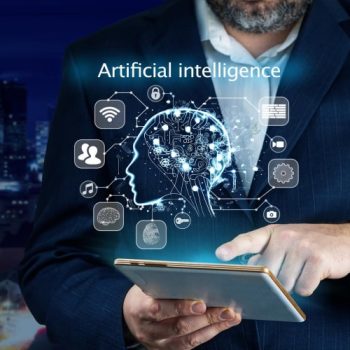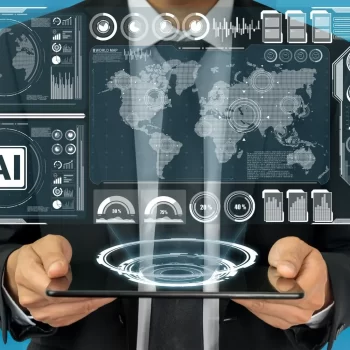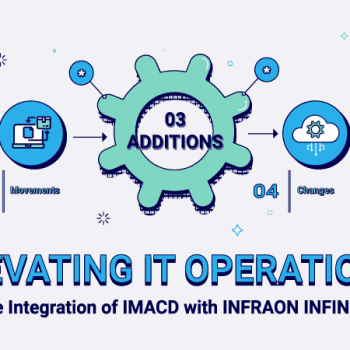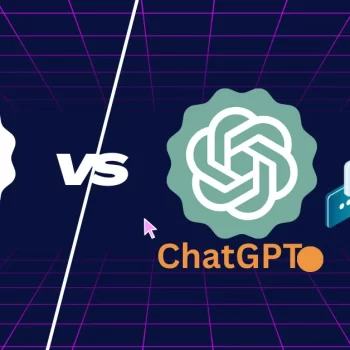Customer support has always been a critical aspect of any business’s success. With customers expecting quick, efficient, and personalized assistance, companies are continuously seeking ways to improve their support systems. Enter AI-based customer helpdesk software solution, a revolutionary solution that combines the power of artificial intelligence and machine learning to transform the customer support landscape.
Related article: AI-Powered Knowledge Base: Why Do You Need One?
What is an AI Helpdesk Software Solution?

AI helpdesk, also known as the AI-powered customer helpdesk or intelligent customer helpdesk, is a sophisticated software system that harnesses artificial intelligence technologies to automate and optimize various aspects of customer support. Unlike traditional helpdesk systems that heavily rely on human agents, the AI helpdesk integrates machine learning algorithms and natural language processing capabilities to interact with customers, understand their queries, and deliver accurate and timely solutions.
At its core, AI helpdesks operate as virtual customer service representatives, capable of handling routine inquiries, providing self-service options, and even routing more complex issues to the appropriate human agents. By mimicking human-like interactions and learning from each interaction, AI Helpdesk enhances customer experiences, reduces response times, and ensures a more efficient support process.
Why Should You Power Helpdesks with AI?
Enhanced efficiency: One of the primary reasons businesses are turning to AI helpdesk is its ability to significantly improve support efficiency. AI-powered bots can handle a large volume of routine and repetitive queries without human intervention. This automation frees up human agents, enabling them to focus on more complex and value-added tasks, resulting in faster issue resolution and increased productivity.
24/7 availability: Unlike human agents who are bound by working hours and holidays, the AI helpdesk operates tirelessly 24/7, offering customers round-the-clock support. This accessibility ensures that customers receive timely assistance whenever they need it, regardless of time zones or geographical location.
Data-driven insights: An AI helpdesk is a treasure trove of valuable customer data. As it interacts with customers, it gathers information about their preferences, pain points, and common issues. This data can be analyzed to gain actionable insights that can drive product improvements, enhance service offerings, and better understand customer behavior.
Personalization: Personalized customer experiences are crucial in today’s competitive market. AI helpdesks excel in this aspect by utilizing customer data to offer tailored solutions and recommendations. By understanding individual customer histories and preferences, the system can provide personalized responses and targeted support, leading to higher customer satisfaction.
Scalability: As businesses grow, so do customer support demands. AI helpdesks can easily scale to accommodate an expanding customer base without the need for substantial workforce investments. This scalability ensures that support quality and response times remain consistent even during periods of high demand.
How AI Intelligence Can Improve Helpdesk Management
Advanced Ticketing and Routing
AI helpdesks use Natural Language Processing (NLP) algorithms to understand customer inquiries and automatically categorize and prioritize support tickets. This intelligent ticketing and routing system ensures that customer queries reach the right agent or AI bot, enhancing efficiency and reducing resolution times.
Automated Responses
AI-powered bots can handle a wide range of frequently asked questions and provide instant, accurate responses. Through machine learning, these bots can continuously improve their responses, reducing the need for human intervention and speeding up customer interactions.
Sentiment Analysis
AI helpdesks can analyze the sentiment behind customer interactions, identifying if a customer is frustrated, satisfied, or neutral. This analysis enables businesses to prioritize urgent issues, proactively address potential complaints, and create a more empathetic and customer-centric support experience.
Predictive Analytics
By analyzing historical data and customer behavior patterns, AI helpdesks can predict potential issues and trends, allowing businesses to take proactive measures and prevent problems before they arise. This predictive capability ensures a more proactive and preemptive approach to customer support.
Virtual Assistants
AI helpdesks can employ virtual assistants to engage in interactive and dynamic conversations with customers. These assistants can guide customers through troubleshooting processes, explain complex procedures, and offer step-by-step solutions, enhancing self-service capabilities.
Features of AI in Helpdesk
Natural Language Understanding (NLU)
AI helpdesk systems employ NLU to comprehend and interpret natural language queries. This capability enables the system to recognize customer intent and deliver relevant responses, improving overall conversational interactions.
Machine Learning
Machine learning algorithms empower AI helpdesks to continuously learn from interactions, improve responses, and adapt to changing customer needs and behaviors.
Chatbots and Virtual Assistants
Chatbots and virtual assistants are the face of the AI helpdesk, providing instant responses, guiding customers through processes, and offering a personalized touch to support interactions.
Multi-Channel Support
AI helpdesks can seamlessly operate across various communication channels, including email, chat, social media, and voice support, ensuring consistent and cohesive customer experiences.
Knowledge Base Management
AI helpdesk systems maintain extensive knowledge bases containing answers to frequently asked questions and troubleshooting guides. These knowledge bases are continuously updated and enriched with new information to ensure accurate and up-to-date support.
Challenges of AI-based Customer Helpdesk Software
AI helpdesk software undoubtedly offers numerous benefits, but it is not without its challenges. As with any advanced technology, there are certain obstacles that businesses must overcome to fully leverage the potential of AI Helpdesks. Below, we explore some of the key challenges:
Integration complexity: One of the primary challenges is integrating the AI helpdesk seamlessly into existing support systems. Companies may already have legacy helpdesk software and CRM tools in place, and integrating AI capabilities with these systems can be complex and time-consuming. Ensuring smooth data flow and compatibility between different platforms is crucial for a successful AI helpdesk implementation.

Data privacy and security: AI helpdesk software requires access to a vast amount of customer data to provide personalized support. This raises concerns regarding data privacy and security. Companies must implement robust data protection measures to ensure that customer information is safeguarded and comply with relevant data privacy regulations.
Training and customization: AI helpdesk solutions rely on machine learning algorithms to improve over time. However, training the AI model and customizing it to accurately understand customer queries and deliver appropriate responses can be challenging. It requires ongoing monitoring, feedback, and updates to ensure the AI system continues to provide accurate and relevant support.
Lack of human touch: While AI-powered bots can handle routine queries efficiently, they may lack the human touch and empathy that customers sometimes require, especially when dealing
with sensitive or emotionally charged issues. Striking the right balance between automation and human intervention is essential to maintain a positive customer experience.
Overreliance on AI: Relying too heavily on AI helpdesks without proper human oversight can lead to issues such as misinterpretation of complex queries or responses that do not fully address customer concerns. Human agents still play a critical role in customer support, especially in handling intricate problems and providing personalized solutions.
Language and cultural barriers: AI helpdesk systems may face challenges in understanding diverse languages, dialects, and cultural nuances. Natural language processing may struggle with certain accents or idiomatic expressions, leading to misinterpretation and inaccurate responses.
Lack of contextual understanding: AI helpdesks may sometimes struggle to understand the context of customer queries, leading to irrelevant or inadequate responses. Understanding context is crucial for providing accurate and meaningful support, especially when customers refer to previous interactions or specific issues.
High initial costs: Implementing AI helpdesk software involves significant initial investment in acquiring the technology, training the model, and integrating it into the existing infrastructure. While the long-term benefits may justify the cost, businesses must carefully assess their budget and requirements before committing to AI-based solutions.
Related article: AI-Powered Ticket Automation: All You Need To Know
Conclusion

The AI revolution is rapidly reshaping the customer support landscape, and AI-based customer helpdesk software stands at the forefront of this transformation. By harnessing the power of artificial intelligence, businesses can streamline their support operations, provide more personalized and efficient assistance to customers, and gain invaluable insights into customer preferences and behavior.
As technology continues to advance, AI helpdesks will only become more sophisticated and capable, further solidifying its position as an indispensable tool for businesses seeking to offer unparalleled customer experiences. Embracing them is not just an option; it’s a strategic imperative for companies that aim to thrive in the digital era of customer service.


















